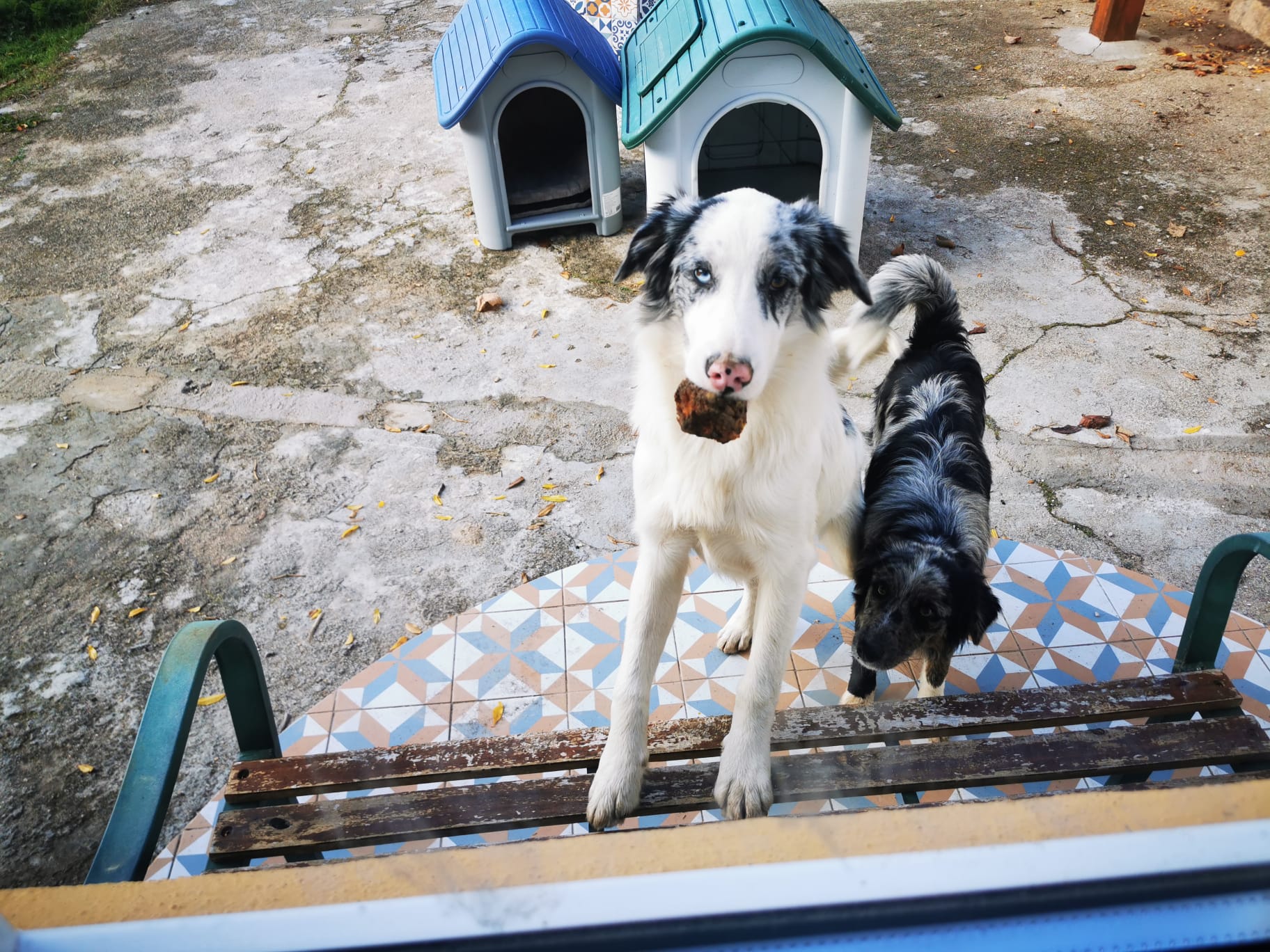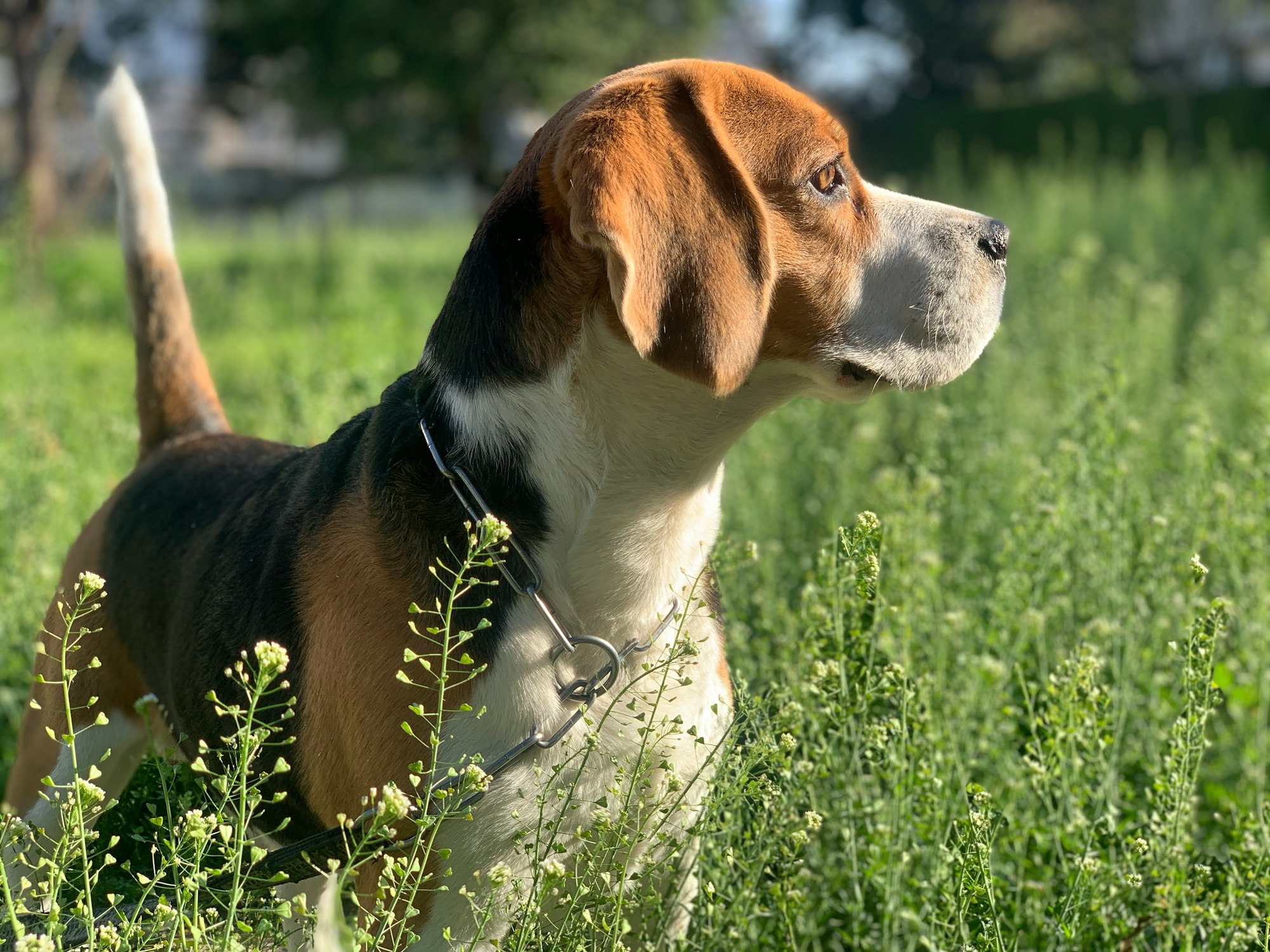Dogs & Pups - The Science Behind Our Best Friends

I love dogs. You love dogs. In fact, it would probably not be an understatement to say that most of the world loves dogs - even if some breeds can be rather difficult to take care of. My own experience with them is limited to the times when my family adopted a Mastif when I was about five - which was admittedly slightly frightening, given the enormous size of the dog - as well as an excitable small Cocker Spaniel when I was eleven. Needless to say, both of their companies brought a lot of happiness and comfort to us, and it is only ill circumstance that forced us to part with them.
Nowadays, between university and other work at home, I find myself reluctant to adopt any pets whatsoever (particularly as it would be incredibly irresponsible to leave an active animal trapped indoors while I'm out!). As such, I usually just play with the two American Shepherd siblings at my grandpa's house when visiting during my holidays - and that has fortunately been the case this Christmas. The brother, called Oreo, is white-furred with grey spots around his paws and has a build larger than even his parents'. He also gets amusingly jealous of his sister Crema, who is smaller and his exact inverse in colour scheme, with black and greys covering her entire fur. (The names do seem somewhat lop-sided, if you're wondering...but that's just part of their charm!)

Since my grandpa lives on what is essentially a fruit farm, Oreo and Crema are able to run around freely and contentedly around the encompassing yard. When a car drives by, they have the habit of chasing and barking after it (behind a fence) until it disappears into the distance - which is always pretty entertaining to watch. With all the apples and apricorns lying on the ground, the two siblings have apparently also developed quite a taste for fruits; Oreo by himself will eat some four to six fallen fruits a day! The sight was initially rather curious to me, since I had always thought that dogs were obligate carnivours. Apparently, however, some breeds (particularly those selectively bred in counter to natural selection to stay at the farm) can tolerate some greens in their diet just fine. This, in turn, made me want to investigate further into their biology.
To celebrate the current festivities and the joys of family reunions, I think it is only appropriate to give a little insight at what makes dogs the affectionate and playful little creatures they are. I only recently discovered that the biochemical research on them is astoundingly thorough - ranging from how efficient their digestive metabolism is to the exact pressure exerted by the contraction of muscle cells in their mandibles - and so it only seems to fit the more you look at it. As such, I present to you: the domestic dog, Canis familiaris.
The Canine Diversity
Dogs come in all sorts of sizes, colours, attitudes and personalities. Indeed, there are so many different breeds of them (over 350 of them, as I understand it), that one just has to wonder - how is it possible that all dog breeds belong to the same species? By definition, individual organisms of the same species are able to breed to produce fertile offspring. Such is the case with dogs; theoretically, a Grey Daschund would therefore be able to successfully breed with even a tiny chihuaha (though they would probably not prefer it). For this to be possible, the two breeds have to be sufficiently genetically similar to produce viable fertilised egg cells. To understand how varied dog genetics can be, however, we should first look at their history of evolution.
Since mankind first started taming wild wolves over 14,000 years ago (speculated to have been somewhere in the Middle East), their genome has diverged significantly from their ancestral stock. Under regular circumstances, this would be no great cause of concern, as all creatures in the wild inevitably change with time and natural selection. Dogs are a special case, however, as they have not been exposed to natural selection for millennia. Instead, research has shown that humans have been selectively breeding them to produce dogs with desired traits for a long time now - long enough to turn them into a new species. Such traits include increased tameness, barking and submisiveness, as well as a delayed fear response in newborn pups (demonstrated by Dmitry Balyayev, who selectively bred foxes for years to reproduce how dogs might have been domesticated over generations). Interestingly, they also appear to have some of the most advanced social recognition in animals, capable of interpreting facial expressions and communication in humans. If you suddenly turn your head to look at a specific object - such as a jar of dog treats - many domestic dogs will move accordingly to inspect it.

We now know that the social aspects in dogs come from alterations in the genes responsible for their hormonal and neurochemical signals. For example, a team from the University of Veterinary Science, Austria, recently compared the levels of cortisol (a stress-inducing hormone) and oxytocin (associated with affection) circulating in the blood of domestic dogs and in their wild relatives, grey wolves (Canis lupus). Consequently, the researchers found that oxytocin was higher in the dogs (particularly in male dogs), possibly signifying that their domestication led to an increased propensity for affection. Albeit, they showed that cortisol levels were also significantly higher in dogs than in the wolves, which counteracts our previous reasoning of reduced fear in domestic animals. As such, more research needs to be done in order to explain this.
It should be noted that the physical variation between dog breeds has only really evolved in the last 200 years, as selective breeding practices took off within our civilisation. Dalmatians were selected for as coach hounds, Charles Spaniels were bred for royalty, and chihuahas were tamed to catch rats in Mexico. The list goes on; but the point is that different breeds have been created to have very specific phenotypes through their interbreeding in isolated populations, the practice of which has unfortunately resulted in a progressive loss of fitness and health in the C. familiaris. Indeed, selective breeding in the past few centuries has caused genetic drift - a phenomenon wherein alleles (versions of genes) spread rapidly throughout a small and isolated population.
Given that dogs face much fewer selective pressures with us than when in the wild, they have not needed to change to survive. Furthermore, genetic analyses have remarked the many deleterious mutations acquired by the species under the forces of selective breeding, allowed to spread through populations as we select for them. Think of pugs, for example, which are prone to a myriad of diseases including hip dysplasia and Brachycephalic Airway Obstruction Syndrome (BAOS). In the jungle, they would not survive; under our homes, they will generally live for long enough to reproduce and pass on their genome to the next generation. Over time, this would eventually turn different breeds into new species (a process referred to as speciation), many of which would never have occurred naturally in the wild. Whether this is good or bad is up to your interpretation - but, either way, it is typically agreed that we want our dogs at home to be as healthy as possible. To acomplish this, researchers have undertaken many-a-task to discover the precise biochemistry and biomechanics underlying particular breeds, and so I would like to showcase some of their findings.
Dogs In Motion, Health & Nutrition
Investigating the overall physique of dogs is challenging, particularly when you want to take cell samples from them. It can be difficult to obtain, invasive and uncomfortable for the dog, and sometimes unethical. As such, it is only last year that a team of researchers looking at walking beagles were able to complete a full musculoskeletal model (featuring 134 muscles) for the average dog - but it is proving to be essential in understanding their body structure and joint displacement during locomotion. In the future, this could very well introduce innovative methods in treating diseases like dysplasia (as apparent in pugs). The pet industry is quite interested in such research, and people all around the world are readily funding it, so I expect we have yet to see further dog discoveries.

In regards to their diet, dogs have diverged from their carnivorous ancestors to become - at least partially - omnivorous. Like Oreo and Crema, many dogs are perfectly fine eating an occasional fruit or vegetable as a snack, alongside their usual protein-rich meals. There are exceptions to this, however. Avocadoes contain persin, for example, which induces diarrheoa in dogs and can be life-threatening in high amounts. Similarly, giving your dog too much spinach can ultimately cause kidney damage due to the high concentrations of oxalic acid in it. (Do bear in mind, of course, that all dogs are different. As I am not a certified veterinarian or an expert on the subject, you should contact your local vet in the case that you require professional guidance for your animal's health.)
In many cases, feeding a dog your own food is also a pretty bad idea. Some people like to give them food like steak, chicken and rice, or perhaps some fried bacon thinking that it will be more fulfilling than suspicious commercial packets of 'dog food'. Others even give gummy bears and packet crisps to them (which my own mother is culpable of!). Suffice to say, studies have found this sort of diet to lead to nutritional imbalances in house dogs, as well as potential organ issues as a consequence of the incredibly high fat contents that human food contains. Like in humans, processed sugars is also a source of obesity, tooth degradation and diabetes in dogs.
Recently, dog owners have also begun feeding their dogs raw foods, including raw eggs and tuna for breakfast. Alongside vitamin and mineral supplements (or some well-chosen veggies), there is some evidence that this could produce a more diverse gut microbiome and improved stool quality in your dog. Research on this is somewhat lacking at the moment - but, from my perspective, at least, it's definitely got a lot of potential!
References
- Adams, J. (2008). Genetics of Dog Breeding. Nature Education 1(1):144. Retrieved from https://www.nature.com/scitable/topicpage/genetics-of-dog-breeding-434/
- Belyaev, D. K. (1979). Destabilizing selection as a factor in domestication. Journal of Heredity 70:301-308. Retrieved from https://doi.org/10.1093/oxfordjournals.jhered.a109263
- Wirobski, G., et al (2021). Endocrine changes related to dog domestication: Comparing urinary cortisol and oxytocin in hand-raised, pack-living dogs and wolves. Hormones and Behaviour 128. Retrieved from https://doi.org/10.1016/j.yhbeh.2020.104901
- Björnerfeldt, S., Webster, M. T., & Vilà, C. (2006). Relaxation of selective constraint on dog mitochondrial DNA following domestication. Genome Research 16(8):990–994. Retrieved from https://doi.org/10.1101/gr.5117706
- Holdt, B., et al (2010). Genome-wide SNP and haplotype analyses reveal a rich history underlying dog domestication. Nature 464:898–902. Retrieved from https://doi.org/10.1038/nature08837
- Stark, H., et al (2021). A three-dimensional musculoskeletal model of the dog. Scientific Reports 11:11335. Retrieved from https://doi.org/10.1038/s41598-021-90058-0
- Davies, R. H., Lawes, J. R., Wales, A. D. (2019). Raw diets for dogs and cats: a review, with particular reference to microbiological hazards. Journal of Small Animal Practices 60(6):329-339. Retrieved from https://doi.org/10.1111/jsap.13000
- Raghavan, M., et al (2005). Evaluation of the effect of dietary vegetable consumption on reducing risk of transitional cell carcinoma of the urinary bladder in Scottish Terriers. Journal of the American Veterinary Medical Association 227(1):94-100. Retrieved from https://doi.org/10.2460/javma.2005.227.94
